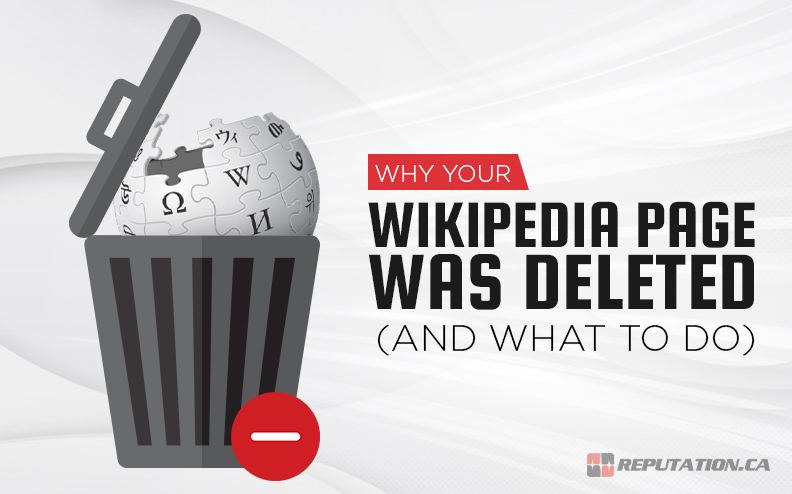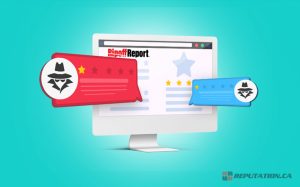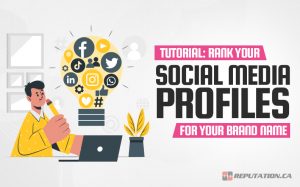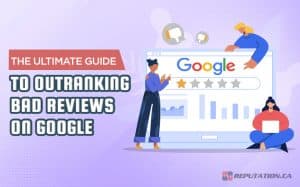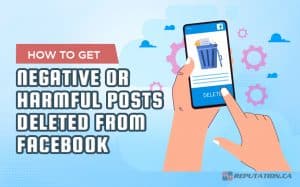Having a Wikipedia page is generally a good thing for most businesses. It shows that, as a company, you’re noteworthy, trustworthy, and valuable. It also gives you high-quality backlinks, both directly from Wikipedia, and from others who would link to you because they trust sites that appear in Wikipedia. The trouble is, Wikipedia is very strict about what they will and will not allow as a page. You can follow all of the rules. You can make sure your Wikipedia page is unbiased and factual, you can provide as robust and detailed a history as you can, and you can extensively source your post through verifiable, trustworthy sources, and you can still find your page deleted. What happened? Why was your page deleted, and what can you do about it? You’ll need to do a little investigation, but you’re not completely at the mercy of the Wikipedia editors.
Step 1: Step Back and Breathe
Gaining a Wikipedia article in the first place can be a steep objective, a difficult one to overcome. It’s hugely valuable, and it’s no surprise that it causes a lot of stress to see it deleted. It’s extremely easy to dive right in and start making arguments, getting into fights with editors, and otherwise stirring up trouble. Suffice it to say that in this case, much like in any other reputation management crisis, the first thing to do is step back and let your emotions cool. Taking a few days isn’t going to jeopardize your chances of getting your page back. If anything, it may improve your chances.  It might help to learn that Wikipedia makes mistakes all the time. While they present themselves as a broad authority on every topic under the sun, the truth is, the site has a huge problem. While the information on it is crowdsourced ostensibly by experts in the fields in which the pages are written, there are a lot of people who consider themselves professional editors but who have very little or no knowledge of the topics they edit. There’s also a lot of inherent bias in Wikipedia editing, a problem that they acknowledge and still struggle with. It has even been covered in the media. So, while your page may have been deleted, it’s possible that the reasoning behind that deletion is faulty.
It might help to learn that Wikipedia makes mistakes all the time. While they present themselves as a broad authority on every topic under the sun, the truth is, the site has a huge problem. While the information on it is crowdsourced ostensibly by experts in the fields in which the pages are written, there are a lot of people who consider themselves professional editors but who have very little or no knowledge of the topics they edit. There’s also a lot of inherent bias in Wikipedia editing, a problem that they acknowledge and still struggle with. It has even been covered in the media. So, while your page may have been deleted, it’s possible that the reasoning behind that deletion is faulty.
Step 2: Identify the Cause of Deletion
One good thing about Wikipedia is that nothing is ever really deleted. The pages themselves are merely hidden and archived; if sufficient arguments are made to persuade the editors to reinstate the page, it can be restored as it was before. The information is not lost. Additionally, a log is created when a page is changed or deleted. You can view the deletion log for your own page by visiting the deletion log search, putting your page name in the “target” field, and viewing the logs that are relevant to your page. 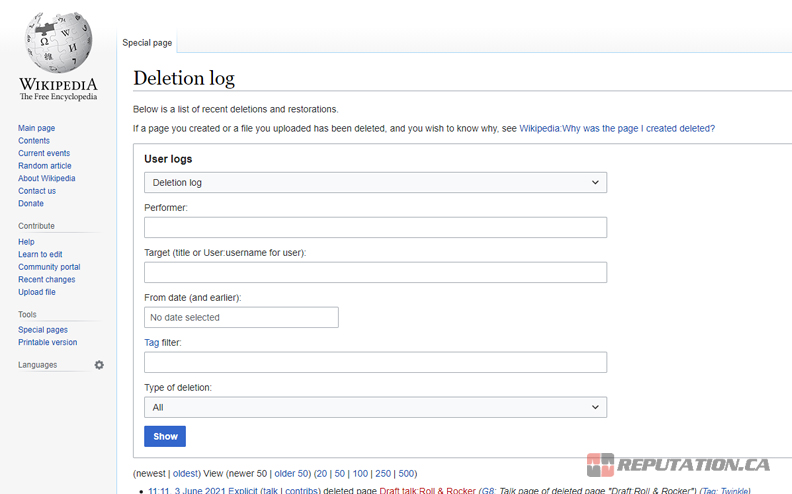 There are a lot of different reasons why a page might be earmarked for deletion. Generally, they fall into three categories:
There are a lot of different reasons why a page might be earmarked for deletion. Generally, they fall into three categories:
- A problem that cannot be solved except through growing your business over time.
- A problem that could be solved given the right data, but that you do not have the ability to solve.
- A problem that could be solved, but that you did not notice in time to take action.
You can read a more in-depth discussion of the deletion policies here. Typically, when your page is deleted, it will be due to an editor deciding that your page is too promotional, not cited well enough, or that your company is not noteworthy enough to have earned a page. In fact, the single biggest roadblock to having a page is the notability guidelines. Many small businesses simply do not qualify for a wiki page, as determined by their notability guidelines for companies and organizations. Sometimes, editors make mistakes. Sometimes, editors have a bias against certain companies or certain categories of companies. Sometimes, trolls or other unsavory operators are simply trying to sabotage your business. There are a lot of potential reasons why your page could have been flagged for deletion. Your goal here is to determine why your page was deleted, which can typically be discovered by looking at the talk page for your page. Typical reasons usually include:
- The page was too promotional and not focused enough on encyclopedic content.
- The page did not contain sufficiently authoritative and unbiased citations.
- The subject of the page did not meet notability guidelines.
- The page contains some kind of copyright violation.
If the talk page does not immediately elucidate you on the reason the page was deleted, you can also look for what kind of deletion process it went through.
- Speedy Deletion. This is the fastest and harshest deletion, taking place in a matter of days or even hours. Typically this is reserved for the most obviously poor pages, such as those perpetuating a hoax, those that are clearly bot-generated or advertorial, or those that are extremely biased in one way or another. Frankly, if your page was subject to speedy deletion, there’s not likely to be much recourse.
- PROD. PROD is Proposed Deletion and is the process for deleting a page that is more or less unanimously determined to be worth deleting, and does not typically require discussion, but is not immediately harmful enough to require speedy deletion. Any editor can object to this and move the article to the third category.
- AfD. Article for Deletion. This is the typical deletion process. The article is flagged for deletion and must undergo discussion between interested editors to determine if the article should be removed or not. This discussion is what you want to read to determine why your article was flagged, who is arguing for deletion, and why. This discussion can last weeks, months, or in some cases even years before the page is determined worthy of removal or not.
If you’ve noticed that your page is slated for deletion but has not been deleted, it’s important that you be very careful about getting involved. Stepping in to argue on your own behalf often backfires, typically due to the commercial interest of companies looking to get backlinks and trust from a Wikipedia page.
Step 3: Determine the Next Step
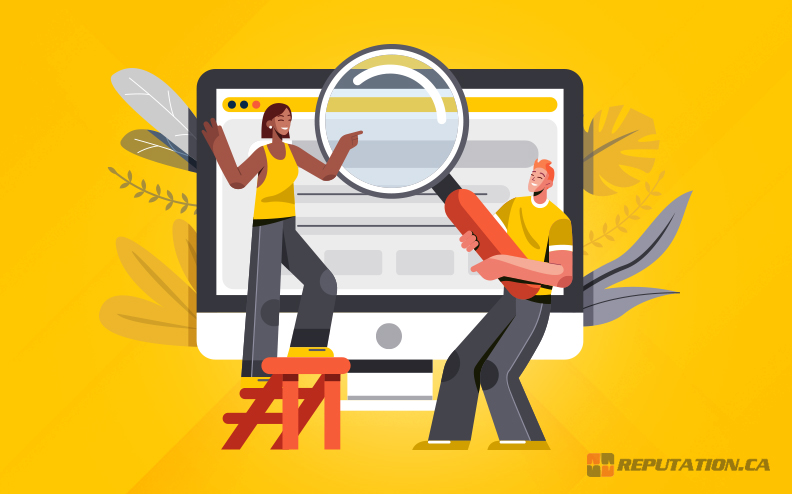 Typically, you have three options. First, you can accept that the deletion was correct, that you can’t do much about it, and that you will simply need to grow your business in other ways before becoming eligible to get your page back. This is, unfortunately, among the more common outcomes. It usually stems from the noteworthiness requirements, which take time and effort to meet as a business owner. Second, you can determine that the deletion was incorrect. It could have been done by an editor with a vendetta, or a troll, and you can appeal to other editors to get your page reinstated. You may even be able to get the specific troll editor removed, or get an editor with a vendetta blocked from editing your page in the future. This is relatively rare, but it does happen. Third, you can determine that the page was removed for valid reasons, but you can address those reasons. This is the best outcome, in that you can put some effort in to restore your page, but it takes the time required to put forth that effort.
Typically, you have three options. First, you can accept that the deletion was correct, that you can’t do much about it, and that you will simply need to grow your business in other ways before becoming eligible to get your page back. This is, unfortunately, among the more common outcomes. It usually stems from the noteworthiness requirements, which take time and effort to meet as a business owner. Second, you can determine that the deletion was incorrect. It could have been done by an editor with a vendetta, or a troll, and you can appeal to other editors to get your page reinstated. You may even be able to get the specific troll editor removed, or get an editor with a vendetta blocked from editing your page in the future. This is relatively rare, but it does happen. Third, you can determine that the page was removed for valid reasons, but you can address those reasons. This is the best outcome, in that you can put some effort in to restore your page, but it takes the time required to put forth that effort.
Step 4: Take the Next Step
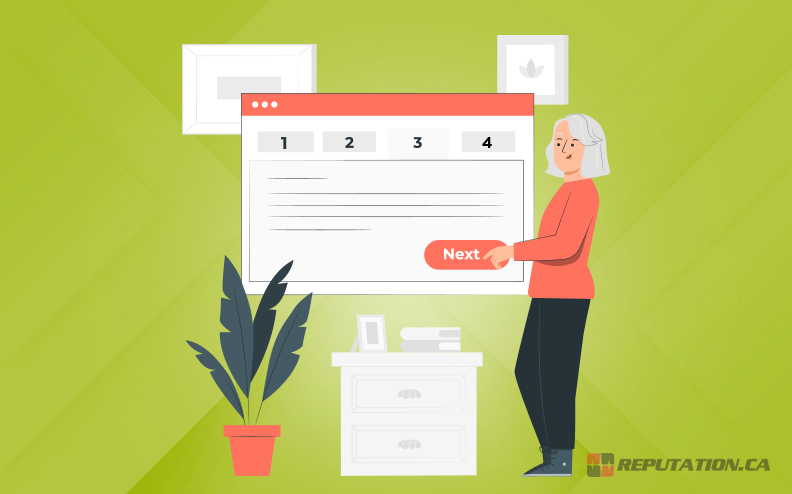 Depending on the course of action you identified above, you now need to take the next step in the process. If there’s nothing you can do on Wikipedia, well, there’s nothing you can do. You need to work to bolster your business into the level of noteworthiness necessary to have and maintain your own page. Familiarize yourself with the notability guidelines, and work to meet them. Typically, this means:
Depending on the course of action you identified above, you now need to take the next step in the process. If there’s nothing you can do on Wikipedia, well, there’s nothing you can do. You need to work to bolster your business into the level of noteworthiness necessary to have and maintain your own page. Familiarize yourself with the notability guidelines, and work to meet them. Typically, this means:
- Building your business in terms of scale. Larger brands with more impact across the country or around the world are much more likely to gain notability.
- Build unbiased, relevant citations. Mentions in sites like Forbes can be good, but they need to be more than single sentences, they can’t be published by you or someone who works for you, and they can’t be advertorial.
- Network more. Businesses with more partnerships, more participation in national and global events, and a greater level of exposure to the world at large are more likely to be noteworthy enough to have a Wikipedia page.
Even still, this is all distressingly subjective, and it’s difficult to both grow and determine when it’s worth trying to get your page back. If you believe the deletion request was incorrect, you can file a request for undeletion. This process, also called the RFU, is typically meant to be used in cases of a speedy deletion or an uncontested deletion, not a contentious deletion after lengthy discussion. This may involve direct conversations with Wikipedia editors and administrators, and you will need to present your case that you are being targeted by trolls or someone with a vendetta against you. You will also need to make sure your page is otherwise notable enough to be published, which can be a high bar to clear. 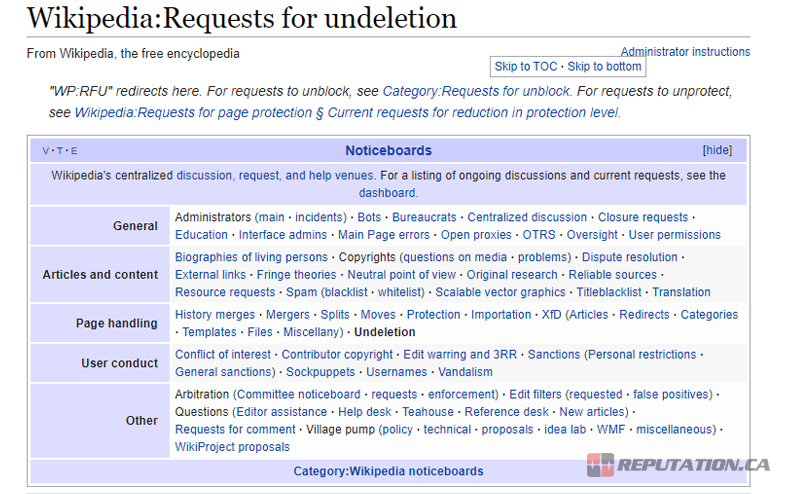 If your page was deleted justly but can be improved, you can file the same request for undeletion as above. Your goal here is not to object to the deletion, but to strive to improve your page. Typically, when you request undeletion, your page will be restored as a draft. Drafts are not part of the public Wikipedia space and are subject to deletion if they are left alone for too long. Your goal is two-fold: first, to improve your page sufficiently. Second, copy your page content locally, so even if it’s deleted again, you still have it and can restore it easily if the chance arises.
If your page was deleted justly but can be improved, you can file the same request for undeletion as above. Your goal here is not to object to the deletion, but to strive to improve your page. Typically, when you request undeletion, your page will be restored as a draft. Drafts are not part of the public Wikipedia space and are subject to deletion if they are left alone for too long. Your goal is two-fold: first, to improve your page sufficiently. Second, copy your page content locally, so even if it’s deleted again, you still have it and can restore it easily if the chance arises.
Wrapping Up
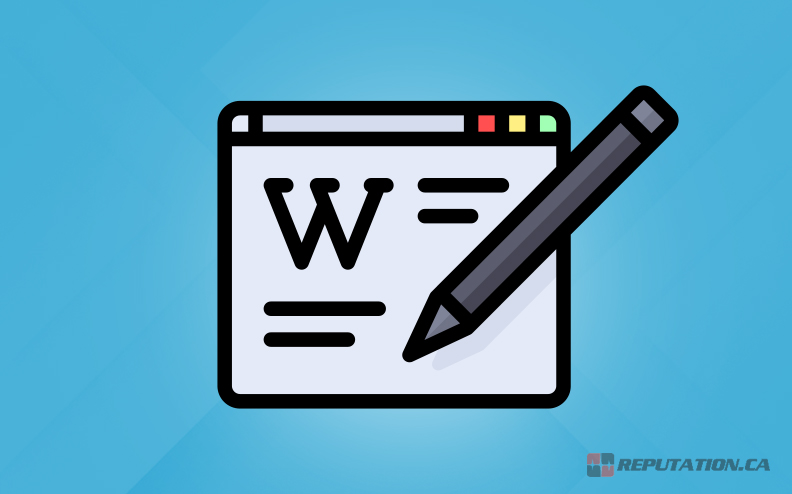 So, overall, you have several goals if your page is earmarked for deletion. First, you need to work to improve the notability and visibility of your business. The smaller the business, the less likely it is to warrant a wiki page, and the harder it will be to get that page to stick. Second, you need to hire someone experienced with Wikipedia editing to do the legwork for you. Doing it yourself not only has a chance to backfire, but it is also an automatic point against you. Third, work to build unbiased, third-party citations from authoritative sources. Avoid sources that are paid promotion, that publish under your name or that of your business, or that have a clear tie to you. Those sources can be good for marketing and for backlinks, but they are not good Wikipedia sources. Finally, take your time. It takes quite a while for these processes to go through, discussions to happen, and reputation to build. If your page is deleted, resign yourself to at least six months without a page. Trying to get it reinstated faster is just as likely to backfire as it is to work. In the meantime, there are other great authoritative sources you can find to build your online brand reputation. Seek out as many of those as you can, and build your brand in other ways. Eventually, Wikipedia will follow.
So, overall, you have several goals if your page is earmarked for deletion. First, you need to work to improve the notability and visibility of your business. The smaller the business, the less likely it is to warrant a wiki page, and the harder it will be to get that page to stick. Second, you need to hire someone experienced with Wikipedia editing to do the legwork for you. Doing it yourself not only has a chance to backfire, but it is also an automatic point against you. Third, work to build unbiased, third-party citations from authoritative sources. Avoid sources that are paid promotion, that publish under your name or that of your business, or that have a clear tie to you. Those sources can be good for marketing and for backlinks, but they are not good Wikipedia sources. Finally, take your time. It takes quite a while for these processes to go through, discussions to happen, and reputation to build. If your page is deleted, resign yourself to at least six months without a page. Trying to get it reinstated faster is just as likely to backfire as it is to work. In the meantime, there are other great authoritative sources you can find to build your online brand reputation. Seek out as many of those as you can, and build your brand in other ways. Eventually, Wikipedia will follow.




